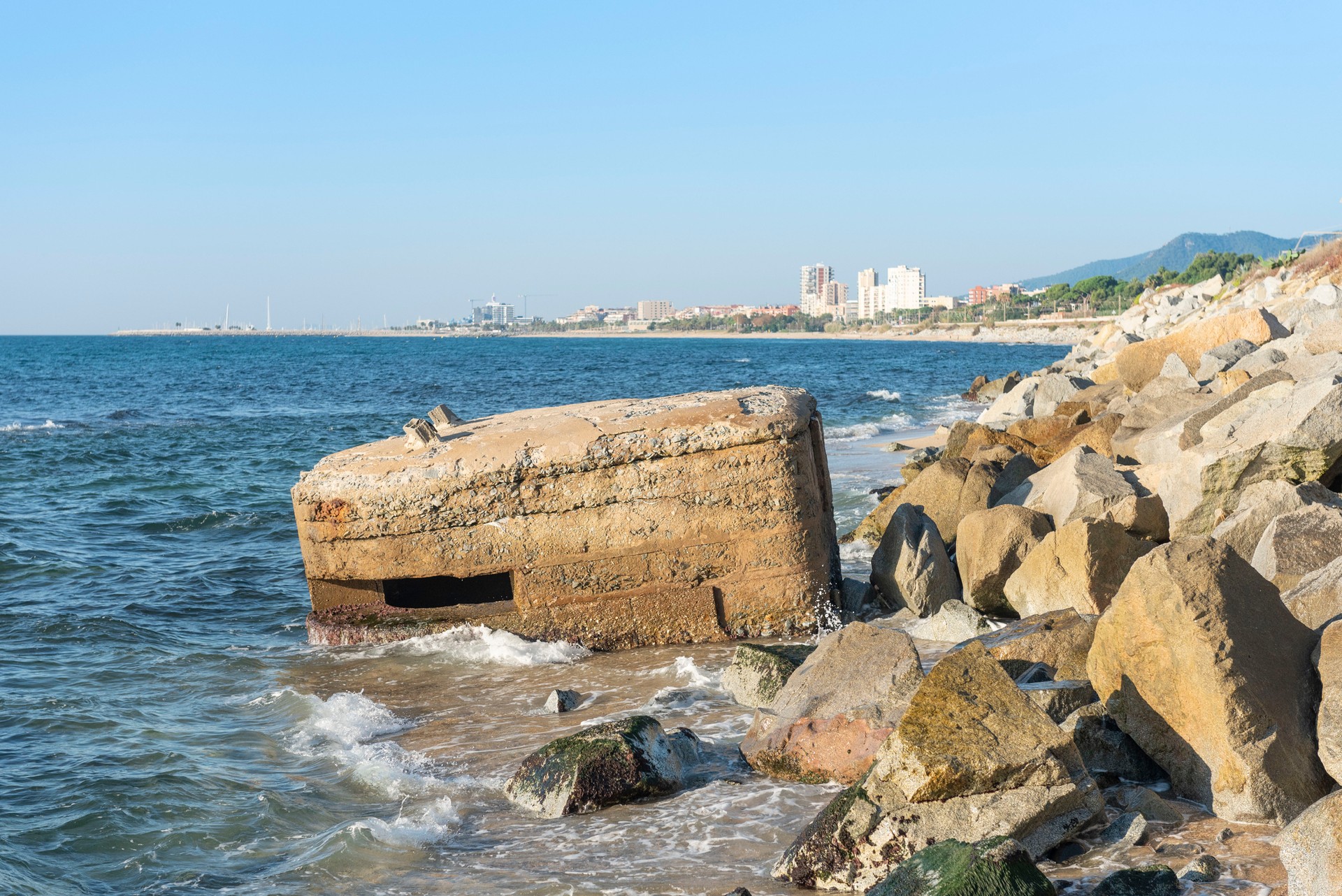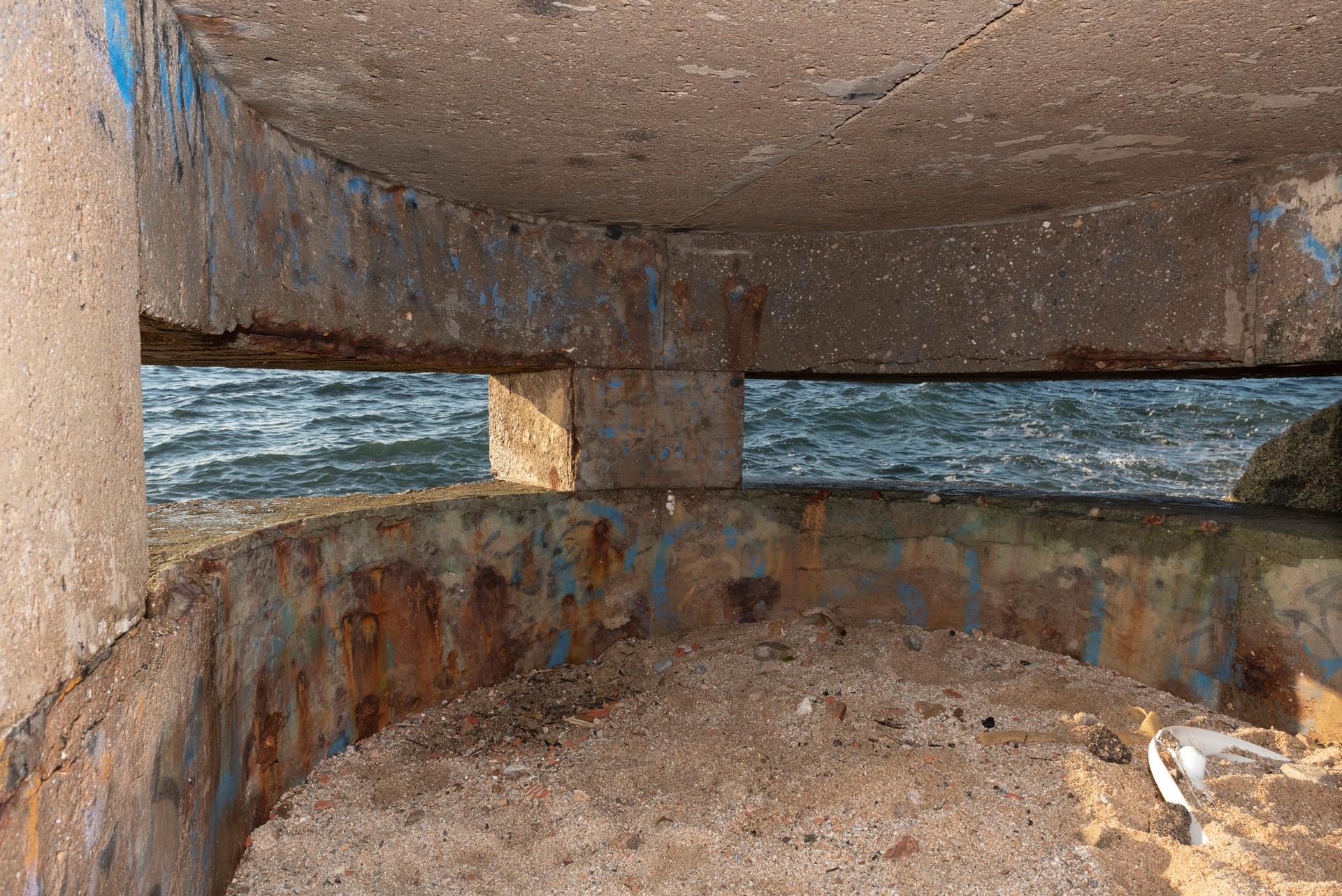Forts on the beach
The fascinating history of Mataró
The forts, or bunkers, are an historic ensemble formed by various military or defensive architectural structures placed in an orderly manner every 600 metres along the coastline of Mataró.
 Of the eight forts or bunkers documented, five still stand, between Varador beach and the Vallgiró torrent, though in varying states of conservation.
Of the eight forts or bunkers documented, five still stand, between Varador beach and the Vallgiró torrent, though in varying states of conservation.
Built during the Spanish Civil War, the forts were used as lookout points to warn of attacks on Maresme county and Barcelona, and also as defences against possible enemy bombardment from sea by such ships as the Canarias, which fired on Mataró on June 8 and July 22, 1937. The sites were later used by the Civil Guard to look out for smugglers and were inhabited by migrants in the 1950s.
All the bunkers have the same structure and were built from the same materials: reinforced concrete over stone foundations, covered by a sandy finish on the exterior to camouflage and integrate them into their surroundings. In some bunkers, the door is on the east side, in others it is on the western wall. The sites may also have been equipped with anti-aircraft guns.
In 2001, the Historic Memory Commission of the Senior Citizens of Mataró launched an initiative to restore the city’s forts. The commission, formed by representatives from the elderly people’s associations in Mataró and linked to the Municipal Council for Senior Citizens, decided to conduct a project of research and promotion of the city’s forts. The aim of the project, which was carried out by several commission members, was to increase public awareness of twentieth-century war heritage.
 In 2010, an inventory was carried out to determine the state of conservation and geographic location of the forts, as well as the techniques used to build them and their possible specific functions. Finally, in 2013, Mataró City Council classified the five remaining forts as Cultural Heritage of Local Interest. The last fort, the eighth, was found later, having sunk into the sea.
In 2010, an inventory was carried out to determine the state of conservation and geographic location of the forts, as well as the techniques used to build them and their possible specific functions. Finally, in 2013, Mataró City Council classified the five remaining forts as Cultural Heritage of Local Interest. The last fort, the eighth, was found later, having sunk into the sea.